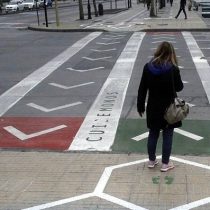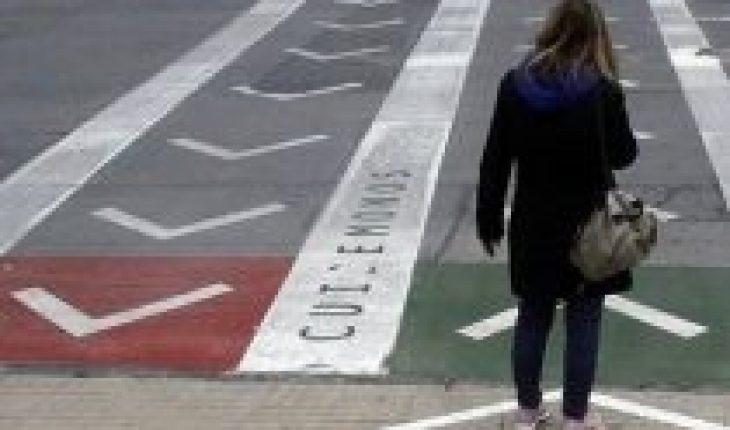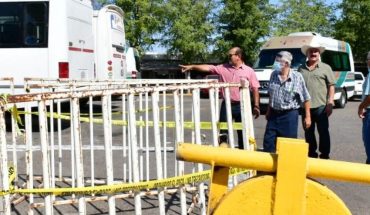
Streets like a pedestrian-focused place. This is the ideal posed by urban planners who advise on what cities should look like with the beginning of deconfining. Prioritize the comfort of pedestrians and cyclists, so that more citizens choose these ways of transporting themselves to their jobs and homes.
The concept of “healthy cities” has been put into its mouth, which have a focus on the redesign of public spaces with these transport methods as the central players of cities. This conception of cities is built with special attention to people with the greatest problems to mobilize, whether those with disabilities or older adults.
This proposal can be made through initiatives to generate more open spaces, such as forming sidewalks and wider cycle paths, to promote physical estrangement and give more security in the return of activities.
Some have even been rethought by the notion of cities as spaces of social communication and neighborhood activity, which would be ideal today due to the possibility of deconggestion of the central spaces of mobility and commerce.
Inclusion
Without a doubt, for these changes to be effective, it is key to make streets more inclusive. Therefore, all pedestrians, including those with less mobility or sensory abilities, should be taken into account when taking action.
The Accessible City Corporation emphasizes this point, recalling that approximately 30% of the population are people with disabilities, chronic diseases, older adults, among others; who, even in the face of pandemic and confinement, have seen their difficulties increased.
“The pandemic has made visible in Chile the unfortunate state of our sidewalks, the forgetfulness and the need for adequate pedestrian infrastructure, in which, the concept “accessible route” and its characteristics, are decisive to welcome people of all ages and abilities”, they express on their website.
The corporation made five relevant recommendations to be considered in urban interventions during these weeks. Above all, they stress the importance that people’s autonomy is directly related to maintaining a physical estrangement appropriate to circumstances.
Safe and continuous pedestrian circulation
The design of safe and fluid streets is a right for the most vulnerable, limited movement. For this reason, cities must be redesigned as a connected network of accessible sidewalks, especially in the most conglomerated areas.
For those who cannot overcome obstacles or uneven slopes, and cannot drive autonomously and safely, we must ensure: smooth and non-slip pavements, accessible route free of obstacles and a pedestrian itinerary without unevens.
Existing sidewalks require revision and reordering in search of freeing up circulation space against barriers such as bicycle parking lots, signs, trees or uncovered corks, etc. (which can be relocated or refrified). Low-cost measures such as the use of paint and cones are usually used, but often this is not accompanied by attention for universal inclusion.
Pedestrian crossings
The crossing of pedestrian areas should allow for continuity accessible to the entire population. This could be done by pedestrian downs that coincide with a demarcation, this should have a wider width of the demarcations considering the two directions of circulation.
There must be an audible signal at the most flowing traffic lights, which will support the visually impaired. The time of the lights should also be considered, for older adults or people with reduced mobility, they may also have a safe crossing.
An “increase in the provision of accessible pedestrian crossings is necessary, so that pedestrians have the safe crossing facilities between the distances of 100 to 150 meters, considering a greater number of continuous steps at the sidewalk level that serve as mitigators of vehicle speed and increase pedestrian safety and fluidity”.
Accessible parking
Considering that much of our country does not have accessible public transport, for many people with physical disabilities the only alternative to movingad is the particular car.
Although parking should be considered to be removed to deliver pedestrian space or for cycleways, this does not include parking lots reserved for people with disabilities, which must be maintained or relocated.
They can be relocated to areas where parking on roads is removed to add cycleways, shared places, or other light interventions. Always prioritizing the central areas where basic services are located.
Finally, encourage legal compliance of parking numbers on public roads and in all public private parking to promote access for people with disabilities. In addition to managing a process so that the days of vehicle restriction are considered exceptionally to people with disabilities who have to use vehicles with technical assistance.
Public transport
As a very common means for citizens, the state of the whereabouts needs to be reviewed. Which must communicate accessiblely to and from the sidewalk, so that the presence of an accessible bus is really exploited.
For this measure to be effective, it is necessary to: Points of stops connected to accessible route, platforms in stable surface whereabouts and minimum 8 meters long to receive in that space the first two doors of the bus and ensure the ascent and descent accessible. Finally, a maximum passenger capacity allowed on the bus, so as to avoid overcrowding.
Access to information and protocols
Technology is a tool that is widely used in today’s transport. For this reason, it must be ensured that these digital instruments are designed for universal access. Priority should be given to people with disabilities having digital connectivity devices and full access to web pages.
Also at this point it is relevant to educate the population in the sign language and include it within the daily delivery of information. On the other hand, preferred care protocols should be required to avoid the risk of contagion in waiting areas.
Current context
These measures that are disseminated in order to accelerate safer pedestrian mobility for the whole of society, also ensure an improvement in the design of cities, prioritizing access and sustainability over time. All this is essential when considering the options so that you can return to the streets while maintaining the necessary social estrangement.
Indeed, the need to generate open spaces to revive movement in cities has been seen in the plans for deconfining around the world, as is the case of the National Deconfining Plan presented by the government and the measures for the deconfunding announced by Gloria Hutt, Minister of Transport.
Moreover, a few months ago TIME magazine highlighted an exhibition by Dutch architect Rem Koolhass at the Guggenheim Museum in New York in March this year, just before the pandemic hit everyone. In his works the author sought to capture the abandonment of rural sectors and the magnitude, and chaos, that urban life has had in cities.
“The problem is that in the last 20 or 30 years, cities have become meeting spaces for relatively rich people and tourists,” Koolhass said in an interview with the magazine. “There’s been a really drastic transformation of the point of cities, which we don’t really pay enough attention to.”





